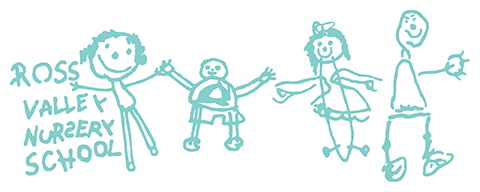Introducing Your Child to the Concept of Print
/One question that parents of preschoolers often ask is, “How can I help my child to be “reading ready”? In a previous newsletter, we explored the connection between rhyming and learning to read. Rhyming is a fun way to develop phonemic awareness (awareness of the sounds that make up language). Being able to manipulate these sounds is an important pre-reading skill that can be fostered both in and out of the classroom. We hope you are rhyming at home! Another way to help children to become reading ready is through introducing the “concepts of print”, a fancy way of referring to the basic understanding of how books work. We introduce these concepts at school as children begin to show a natural curiosity about reading and writing. You can easily reinforce these basic concepts at home while reading to your child. Here are some of the concepts of print in a nutshell:
Letters and words hold meaning: It starts with the basic understanding that the words on the page tell the reader what to say, and that these word hold meaning. Initially, there is usually confusion about the difference between letters and words. The idea that letters make up words, and words make up sentences will take some time to understand.
Illustrations correspond to the print: Looking at the illustrations gives children a lot of their information. Learning that these pictures illustrate what the words are saying is an important concept.
Some of the concepts relate to directionality. When asked, most young children don’t know right from left. But they frequently understand that:
We read from left to right . (before knowing left from right, they often understand that “reading goes that way.”) !
We read from top to bottom.
Return sweep: When we get to the end of a line (right side of the page) we return to the left side to continue reading.
We read the left page before the right page: (again, initially understood as “we read this page before that page)
Some other important pre- reading concepts:
The difference between a letter and a word: As mentioned earlier, this can take a while for pre-readers to sort out; that letters are the building blocks that make words.
The spaces between words: Those important blank bits that show us when one word ends and another begins.
Where to start reading: Where does the reader begin? Where exactly is the first word on the page?
One to one correspondence: the idea that the print matches the spoken words, (easily illustrated by putting your finger under each word as it is read.)
Punctuation can also be introduced simply. (“Do you see this tiny dot at the end of the sentence?. It’s really important. It tells me when to stop.”)
As you can see, these concepts add up to a basic understanding of how reading works. Now for the important question – How do we introduce these concepts to young pre-readers? Here are some things to keep in mind:
These concepts emerge over time. It takes a while. If we try to teach these things all at once, their little eyes glaze over very quickly. It is best to touch on these concepts briefly. While reading to your child at home, you might choose just one concept to chat about (“on the fly”, so to speak)
Your child’s natural curiosity about reading will emerge at its own pace. Follow their cues. For example, you might ask, “Do you know where the first word is on this page? Do you know where I begin reading?” And they might answer, “Can we just get back to the story?” Yes, return to the story and bring it up at another time. It will likely be obvious when they are interested, and very obvious when they are not.
Remember that all children develop at their own pace. Be patient if your child shows little interest in these concepts or reading in general. Just keep reading to them the kinds of books that hold their interest. Enjoy that intimate, quality time of reading a story together. That is way more important than “teaching” them anything about reading. Their interest will develop eventually.

